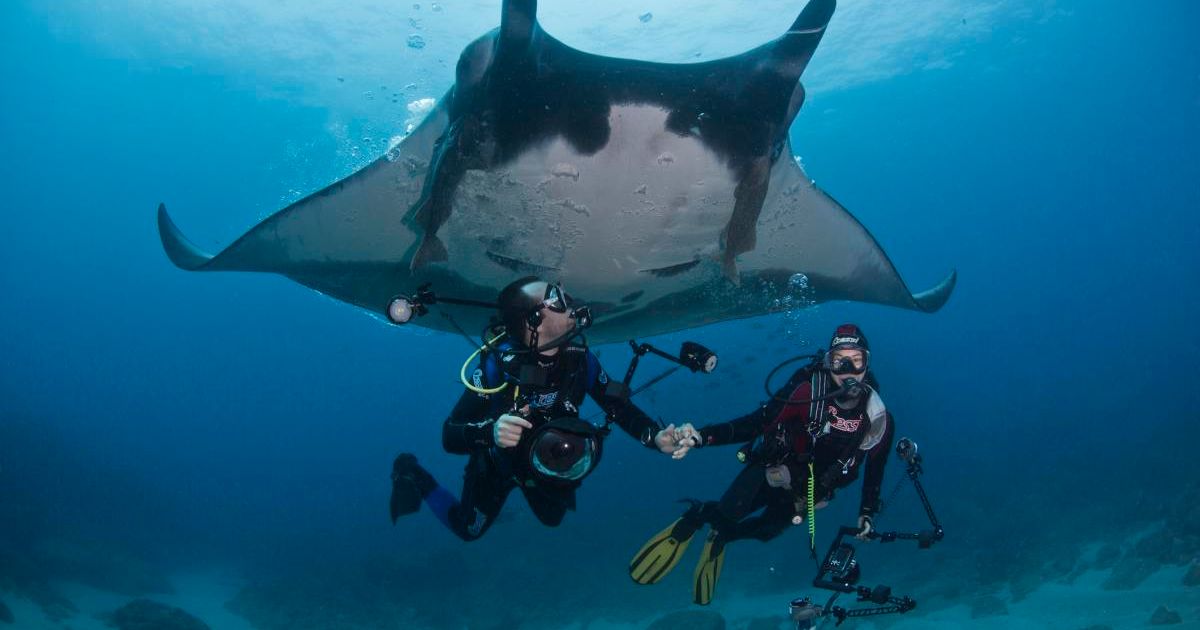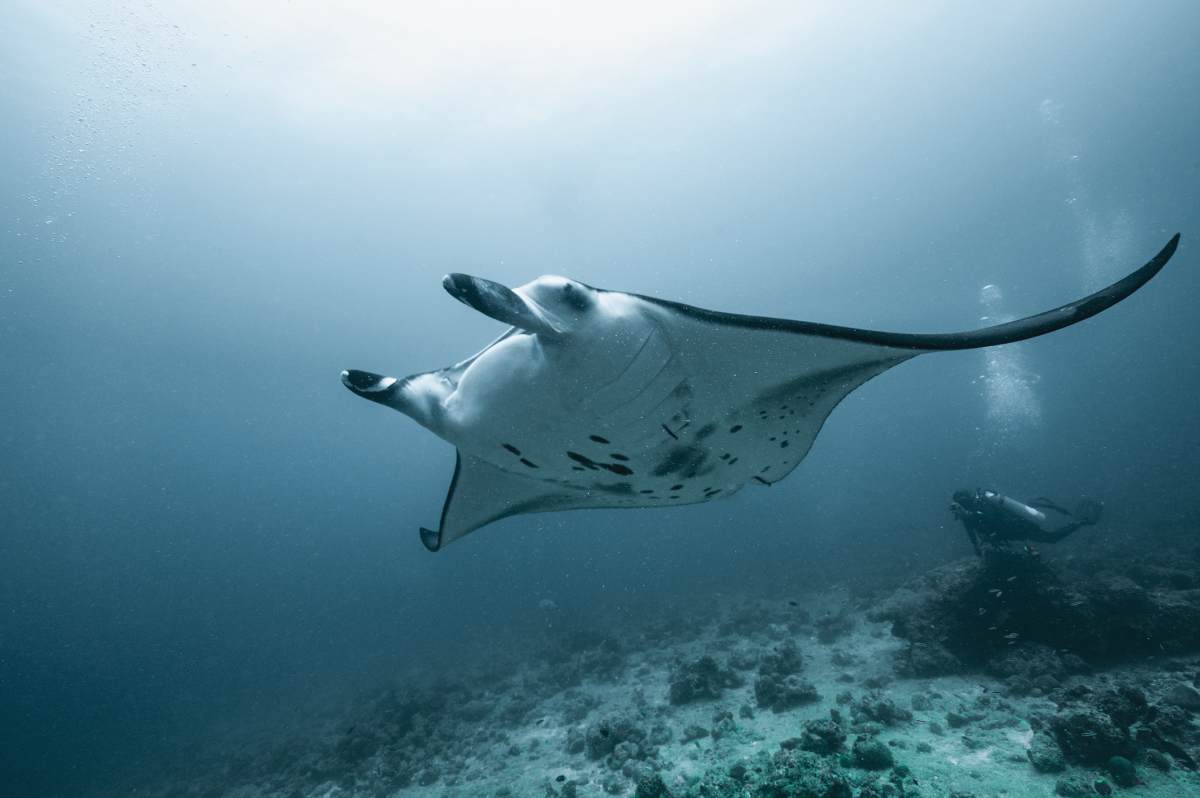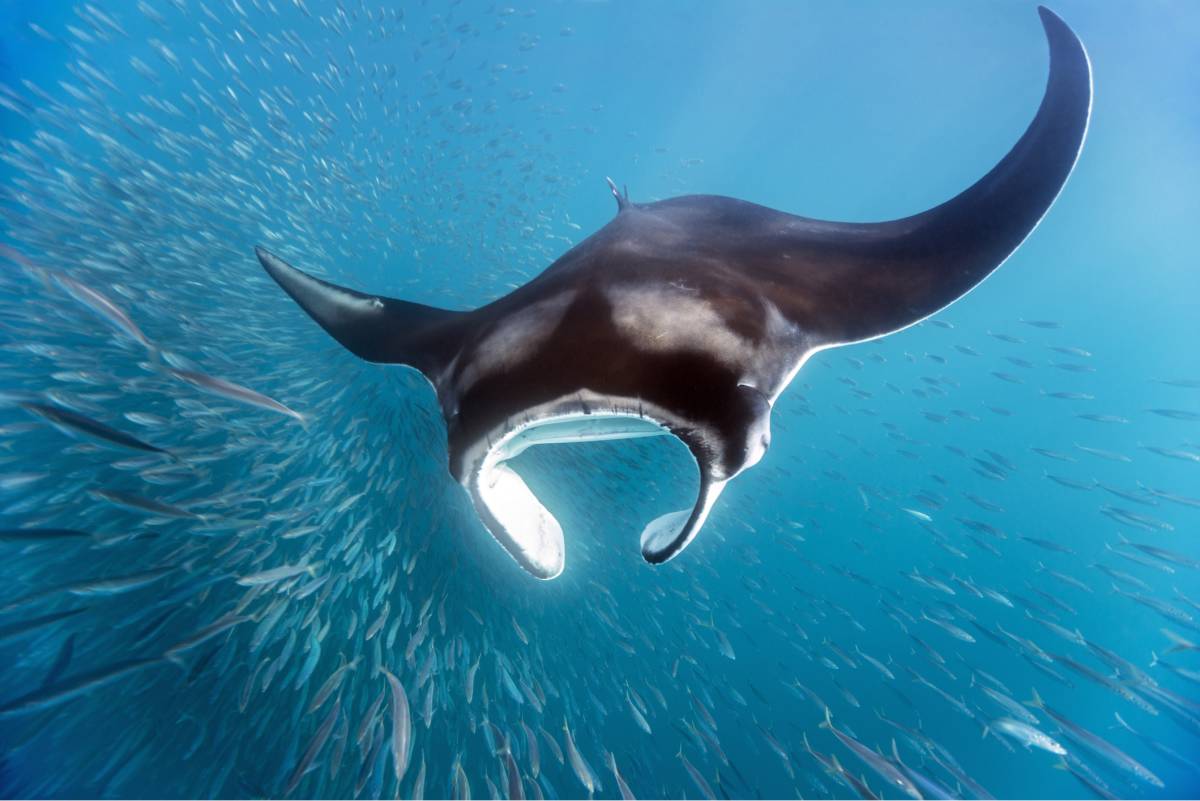Scientists Collaborated With Fishermen to Design a Brilliant Tool That Saves Manta Rays Trapped in Tuna Nets

Their vessel bobbed on the chugging swells of the waters off the coast of Costa Rica as the crew members noticed that a giant manta ray was stuck to a net they had dangled below to catch yellowfin tuna. Thanks to a fillet knife that they freed the majestic fish, as seen in their spearfishing documentary. This, however, is not an isolated case. Manta Trust reports that more than 13,000 manta and devil rays (mobulids) are accidentally trapped each year in the nets fishermen lay out to catch tuna. Most fishermen employ purse seine nets to catch them. They encircle the school of fish and tighten the net so the fish can’t escape. Sadly, this also hinders the other animals, like the rays, from escaping the net if they get pinned down.

Since these fish need to swim continuously in the water to breathe, they often lose their life in this short window of time. In a new study documented in Conservation Biology, scientists documented a contemporary tool they designed to save the mobulids that might be entangled in the tuna net. This “manta sorting grid” offers a ray of hope for manta rays. Nicknamed “blanketfish,” manta rays are not just fish; they are the birds of the sea. You’ll notice how these gigantic fish glide through the waters, flapping their triangular pectoral fins, undulating with the currents, their pinny ray trailing at the back. Their insanely intelligent biology has even inspired scientists to invent underwater biovehicles that they use to map the seafloor and investigate underwater environments.

As majestic as they are, mantas are cordial too. And wise, like monks. A BBC Earth documentary showed a diamond-shaped manta receiving a spring-cleaning treatment from a bluestreak wrasse in the Pacific Ocean. Another video shows a manta ray maintaining her calm, even when a notorious sea turtle darts from behind her and pecks a slap on her body. Sadly, however, 60 percent of these sage-like beasts of the sea are often entrapped in the purse seine nets overlaid to catch smaller fish like sardines or tuna. Once they become locked in the net, it is difficult, if not impossible, for them to escape. All of a sudden, these glamorous ballerinas are prohibited from breathing. They “need to swim” continuously to breathe.

Years of recurring entanglement episodes have left these mobulids with a worrisome vulnerability and mortality status. Between December 2022 and February 2023, and May to June 2023, and March to April 2024, Melissa Cronin ventured on several expeditions to save the manta rays in tropical and subtropical waters. After observing the rays getting tangled in the nets, she co-founded Mobula Conservation Project. As part of this project, this research was aimed at designing a specialized grid that would help fishermen catch the fish.
‘Manta grid’ provides a ray of hope against industrial #bycatch threathttps://t.co/xpzS7T4tpp#oceans #fishing #rays pic.twitter.com/bz3QZ8BS3B
— Environmental Investigation Agency (@EIA_News) March 28, 2023
Initially, the idea of this grid was conceived by a fisherman in the Atlantic Ocean working for a Spanish fishing company. The fisherman described that he used bamboo nets to construct a grid to release large-sized animals like mobulids and sharks. Scientists saw the potential. They used the same design to craft a grid, with the addition of stainless steel mesh. The grid acts both like a pasta strainer and a flattened pizza pan, wherein the trapped manta acts like the pasta strand or the pizza. The simple grid tool ensures that the trapped manta is liberated while the fisherman have secured their scoop of tuna. Moving forward, the tool highlights the need for further data collection by onboard observers or electronic monitoring systems.
More on Green Matters
Scientists Accidentally Found a Way to Turn Plastic Into Diamonds — and the Results Look Promising
Scientists Create Habitats to Revive Population Of ‘Living Dinosaurs Of The Fish World’ in Minnesota